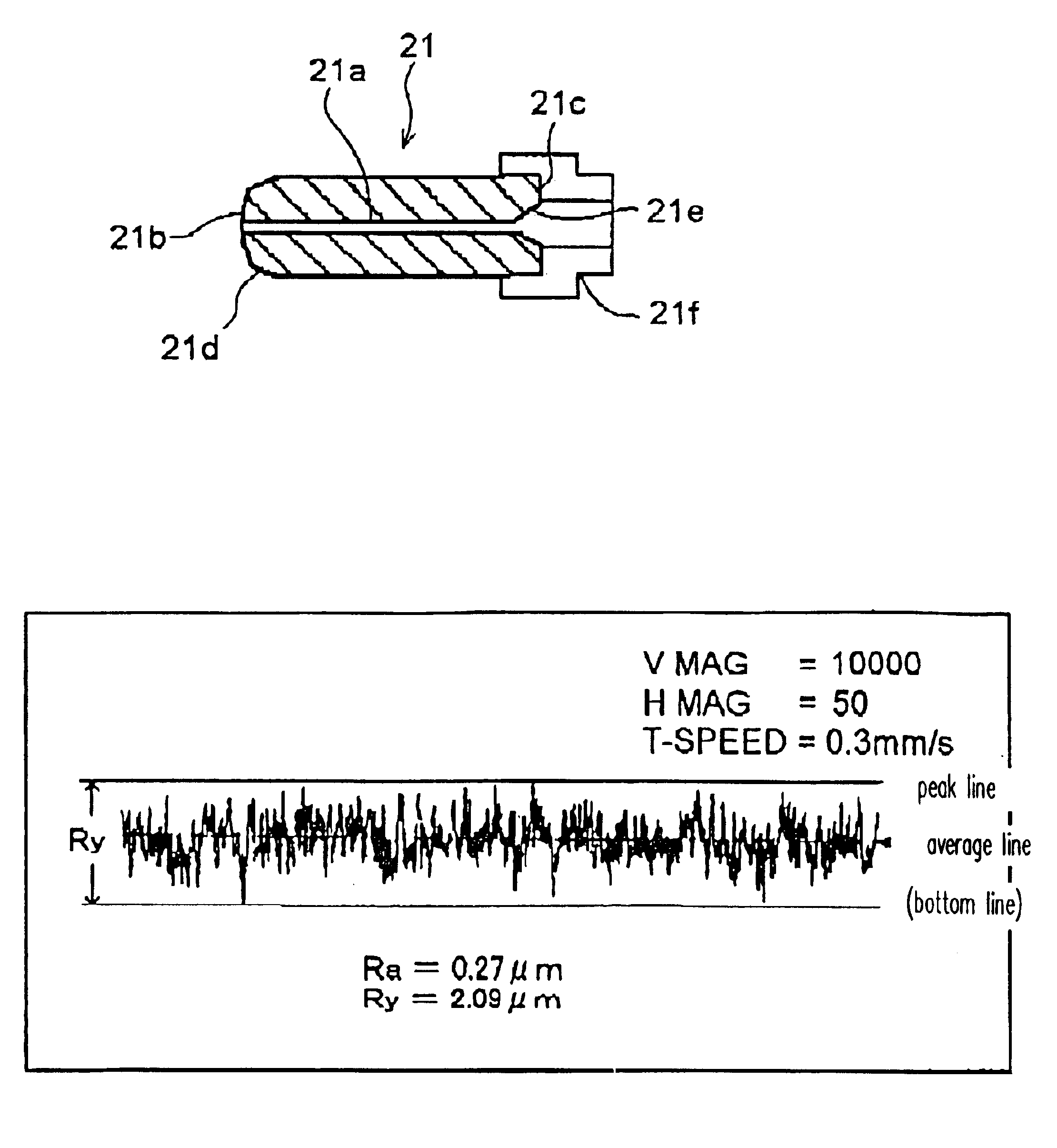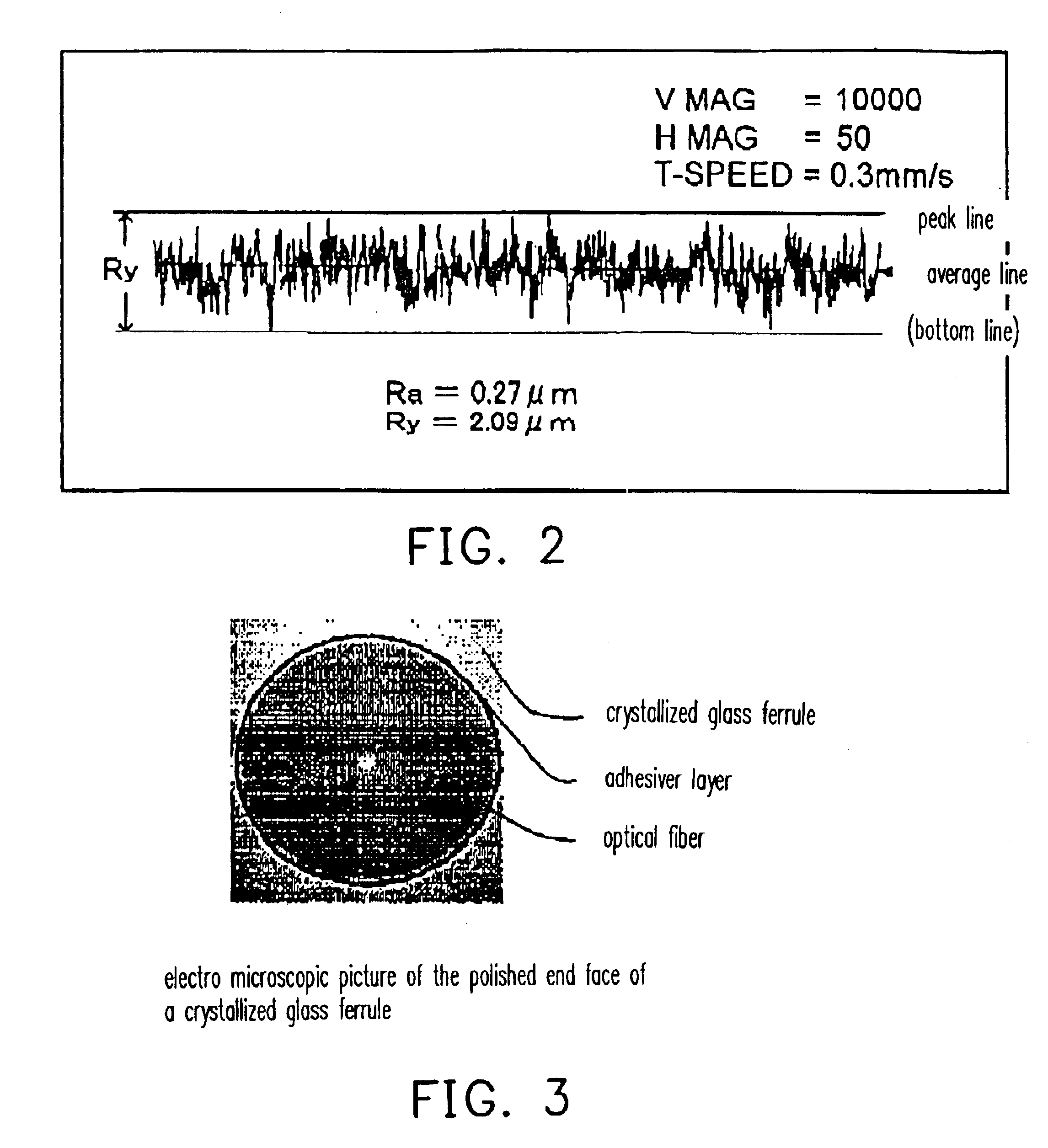Capillary for optical fiber and ferrule for optical connector for reducing connection loss
a technology of optical fiber and ferrule, which is applied in the direction of optics, optical elements, instruments, etc., can solve the problems of increasing light signal loss, increasing the manufacturing cost of ferrules, and extraordinary cumbersome actual core adjusting operation
- Summary
- Abstract
- Description
- Claims
- Application Information
AI Technical Summary
Benefits of technology
Problems solved by technology
Method used
Image
Examples
Embodiment Construction
The inventors have used, for example, a crystallized glass capillary for optical fiber having the composition shown in a table 1 as one example of the capillaries for optical fiber according to the present invention.
As shown FIG. 1 (A), the crystallized glass capillary 20 for optical fiber is manufactured. The capillary 20 for optical fiber has an inner hole 20a with the surface roughness Ra value of, for example, approximately 0.3 .mu.m, Ry value of approximately 2.0 .mu.m, the difference between the average line and the peak line of approximately 1.0 .mu.m, wherein the inner diameter of the inner hole is approximately 1.0 .mu.m (0.95 to 1.05 .mu.m) larger than the outer diameter of an optical fiber to be inserted.
The ferrule 21 for optical connector shown in FIG. 1 (B) has been manufactured using the capillary for optical fiber 20. The manufactured ferrule 21 for optical fiber can be connected to an optical connector plug with a prescribed connection loss. For example, the ferrule...
PUM
| Property | Measurement | Unit |
|---|---|---|
| surface roughness | aaaaa | aaaaa |
| surface roughness | aaaaa | aaaaa |
| surface roughness | aaaaa | aaaaa |
Abstract
Description
Claims
Application Information
 Login to View More
Login to View More - R&D
- Intellectual Property
- Life Sciences
- Materials
- Tech Scout
- Unparalleled Data Quality
- Higher Quality Content
- 60% Fewer Hallucinations
Browse by: Latest US Patents, China's latest patents, Technical Efficacy Thesaurus, Application Domain, Technology Topic, Popular Technical Reports.
© 2025 PatSnap. All rights reserved.Legal|Privacy policy|Modern Slavery Act Transparency Statement|Sitemap|About US| Contact US: help@patsnap.com



